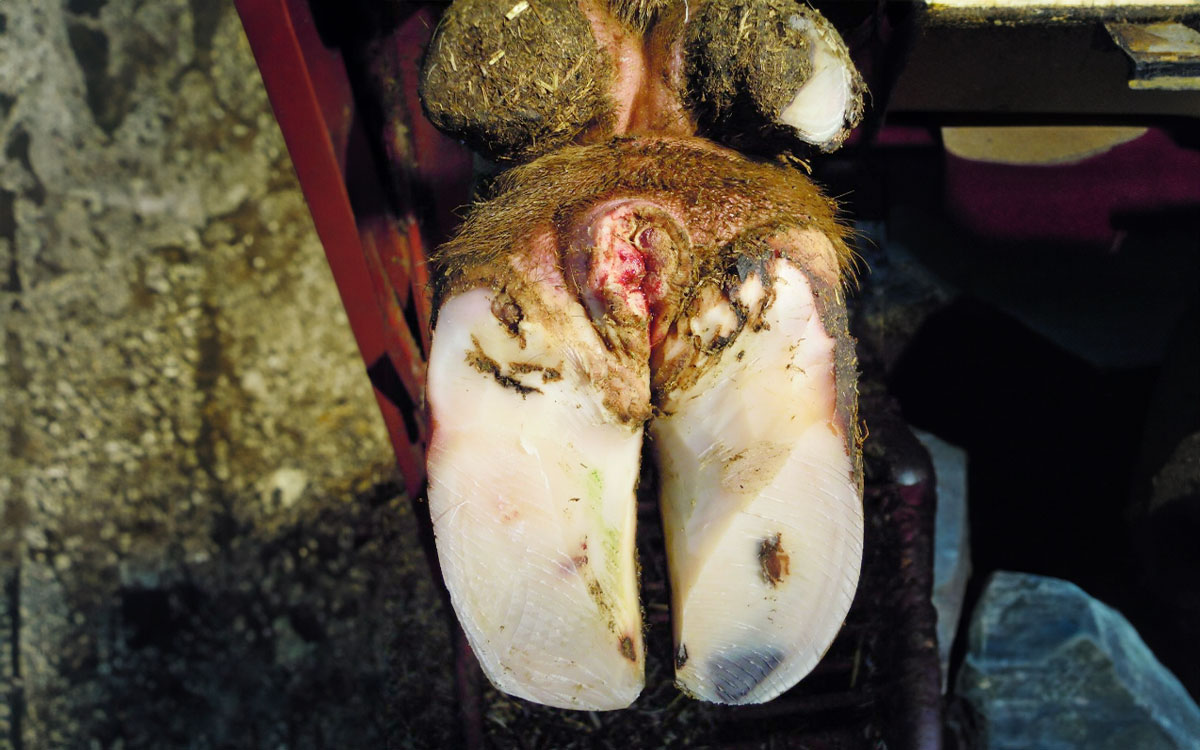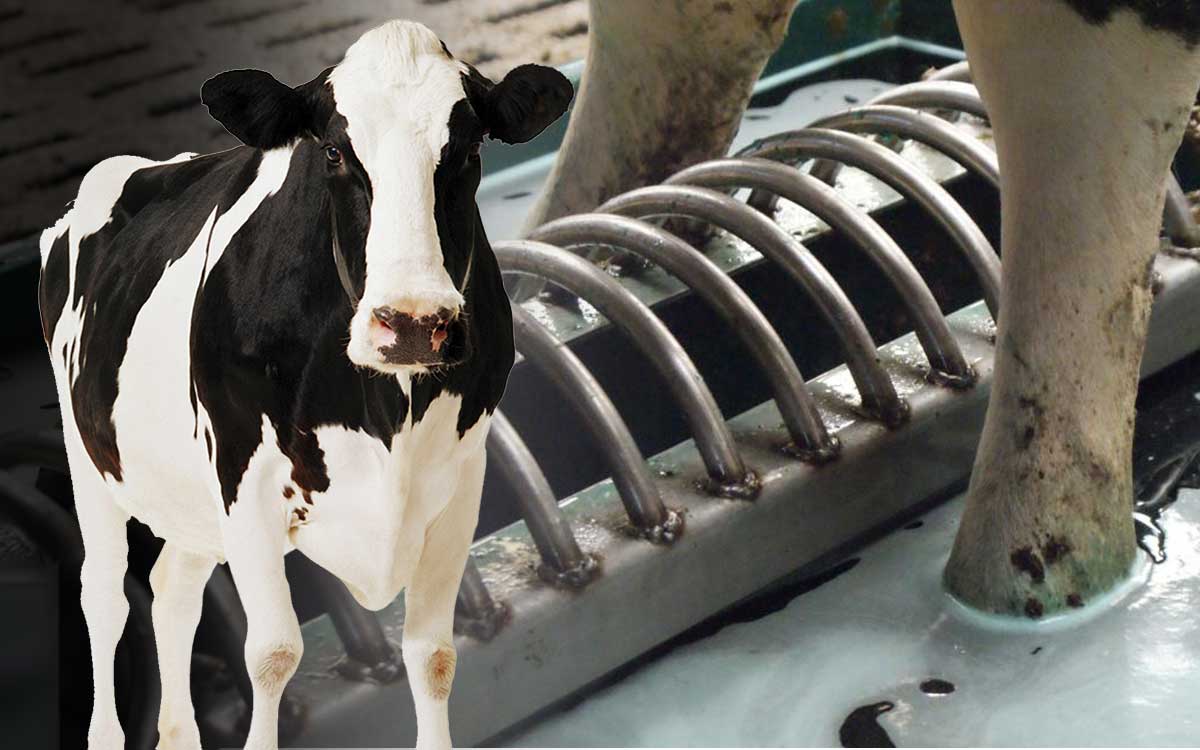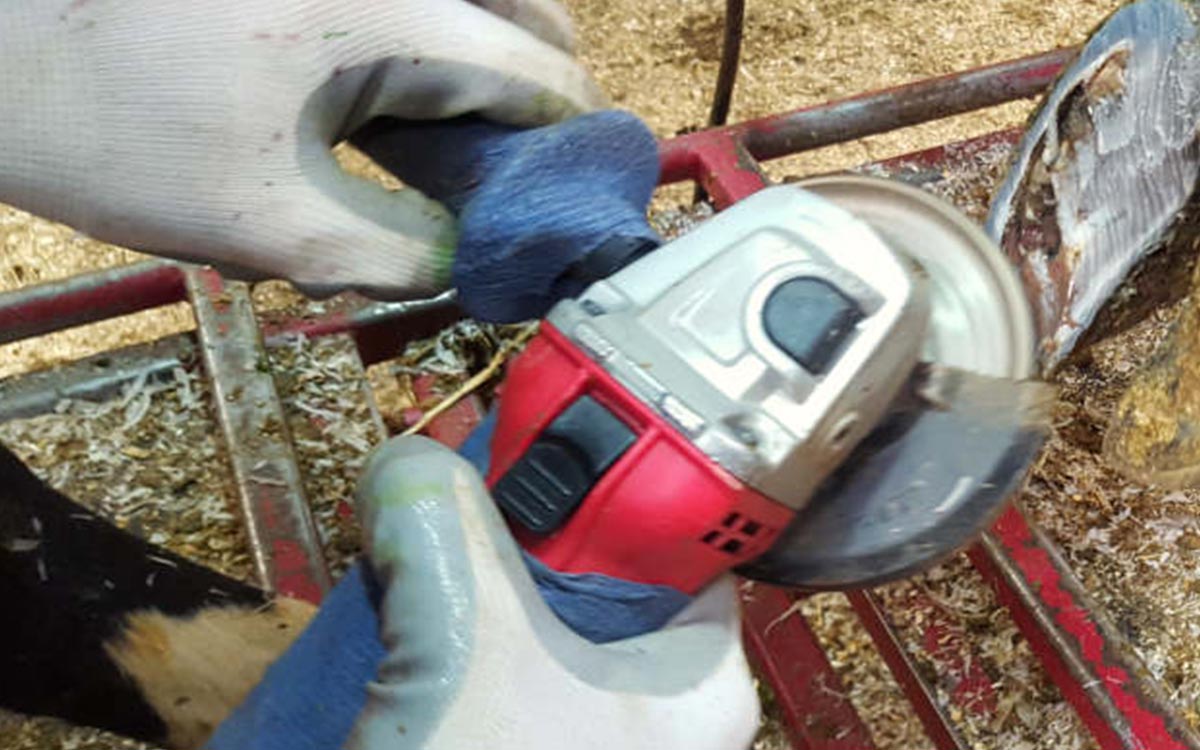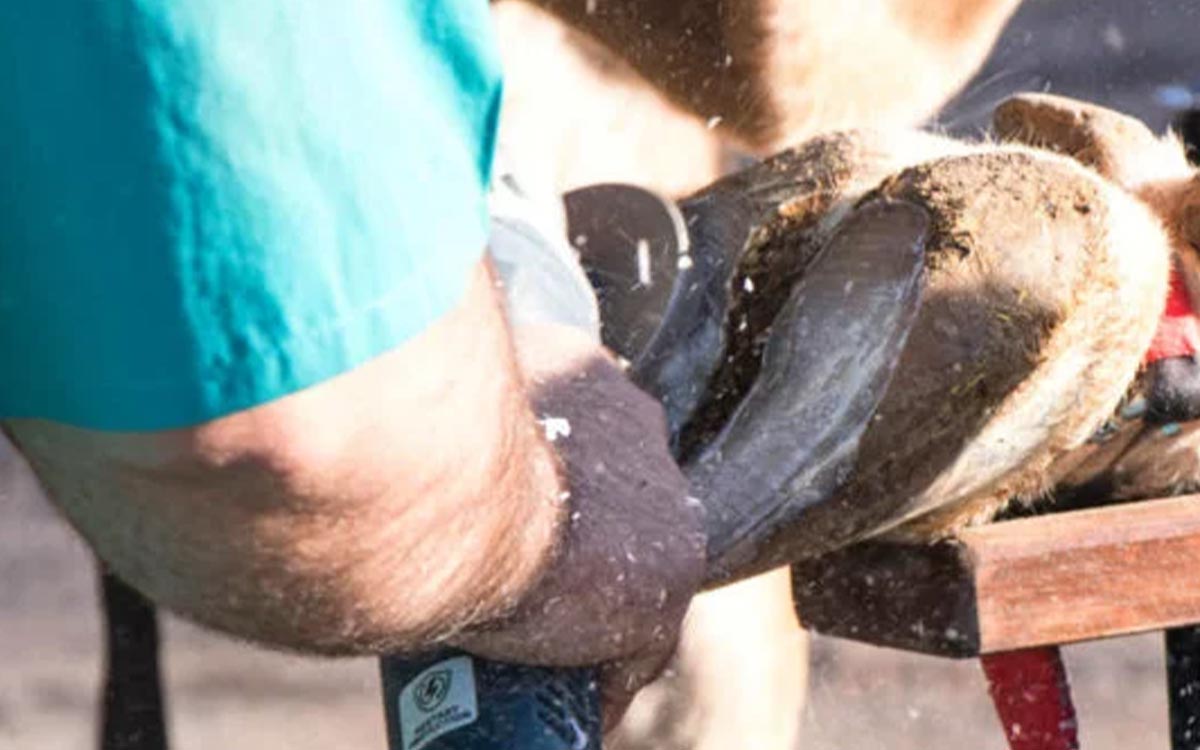Table of Contents
Hairy heel warts is a common hoof issue in cattle that can significantly impact their well-being and productivity. The infectious nature of this condition makes it crucial for farmers to have a comprehensive understanding of its symptoms, causes, treatment options, and prevention strategies.
The most effective way to prevent and treat hairy heel warts in cattle is by following proven hoof care protocols, including individual treatment and consistent use of preventative tools such as spraying and footbaths.
Cattle affected by hairy heel warts, officially called digital dermatitis and also known as strawberry footrot or Mortellaro disease, experience a range of distressing symptoms. Lameness is often the first noticeable sign, as affected animals may be reluctant to bear weight on their affected limbs. Additionally, lesions characterized by a hair-like appearance may be present on the heel and interdigital spaces. These lesions can be painful, leading to changes in the behaviour of affected cattle.
Table of Contents
What Causes Hairy Heel Warts in Cattle?
The primary culprits are poor hygiene, crowded and stressful environments, inadequate hoof care, herd health issues, and contaminated footbaths. These factors create the perfect breeding ground for the Treponema bacteria responsible for digital dermatitis.
That being said, as a professional hoof trimmer, I have seen the nearly perfect herds and still found some hairy heel warts.
Poor Hygiene
Inadequate cleanliness and hygiene practices on the farm can contribute to the development and spread of digital dermatitis. It is essential to maintain clean and dry environments to minimize the risk of infection. Regular cleaning of barns, along with proper manure management, can go a long way in reducing the incidence of this condition.
Poor hygiene not only affects the immediate environment but also the overall health of the cattle. Accumulated manure and mud holes can harbor bacteria and other pathogens, increasing the likelihood of infection. Regular cleaning and disinfection can reduce hairy heel warts in cattle and create a healthier environment.
Crowded and Stressful Environments
Cattle housed in cramped and overcrowded conditions are more susceptible to stress, which weakens their immune system and makes them more susceptible to infections like digital dermatitis. Providing ample space and comfortable resting areas for the animals can help reduce stress and mitigate the risk of this disease.
Stress in cattle can have a significant impact on their overall well-being. Overcrowding can lead to increased competition for resources, such as food and water, causing stress and anxiety among the animals. This stress weakens their immune system, making them more vulnerable to infections. By providing your cows with enough space to move and rest comfortably, you can promote a healthier environment that reduces the likelihood of hairy heel warts.

Herd Health Issues
Unaddressed herd health issues can contribute to the prevalence of digital dermatitis. Conditions such as mastitis, metritis, and other infectious diseases impact the overall health of the herd, making them more susceptible to digital dermatitis. Implementing effective disease management protocols, including regular veterinary checks and treatments, can help keep your herd healthy and reduce the risk of digital dermatitis.
Maintaining a healthy herd is crucial for preventing various diseases, including digital dermatitis. Mastitis, for example, can weaken the immune system of cows, making them more susceptible to other infections.
Contaminated Footbaths
Footbaths are a common tool used for disease prevention in cattle. However, if not properly maintained, they can become a breeding ground for bacteria, including those responsible for digital dermatitis. Regularly cleaning and disinfecting footbaths, along with refreshing the solution, is essential to prevent contamination and the spread of this condition.
In the herd I visit, we see better results from spraying cows once a week than using foot baths. If we look at the lame cow that is affected by a hairy wart, she will be last through the parlour and contaminated foot bath—so it makes sense to add this step into our protocol!
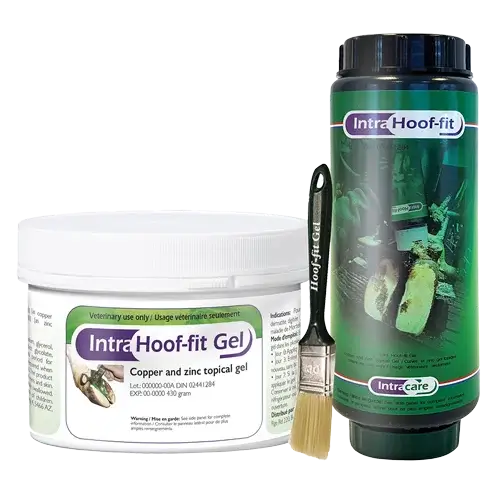
Hoof-fit Gel
Treatment Options for Hairy Heel Warts in Cattle
When it comes to treating digital dermatitis in cattle, various options are available. Preventative methods, such as footbaths containing a disinfectant, are commonly used to control the bacteria responsible for the condition.
Two commonly used foot bath products for hairy heel warts are a footbath solution containing copper sulfate or formalin. Copper sulfate (CuSO4) has antimicrobial properties that help kill the bacteria causing the infection, but the use of CuSO4 is not proven against hairy warts and is a pollution for the environment. Formalin is a carcinogen and should not be used in our dairy farms. Recent studies by Dr. Dopfer in Wisconsin have proven that harsh products used in a footbath cause digital dermatitis to become a chronic lesion.
Additionally, it is important to note that the concentration and frequency of footbaths should be carefully monitored to prevent any adverse effects on the cattle’s hooves.
Topical Treatments
The topical treatment of a digital dermatitis starts with Hoof-fit Gel and a wrap. You might say, “But that sounds like work!” Still, if success and healing are your goal, then based on my experiences, this proven and approved treatment for digital dermatitis is the way to go! Once the problem is under control, the path to prevention is opened.

Surgical Removal
As a trimmer, I have seen cases where a hairy wart was surgically removed. However, this should be considered as the last resort. Such warts are usually in the chronic stage and grow to a size that causes discomfort. They can also appear on the corn in between the two claws of an animal, leading to significant pain. In my experience, I recommend exploring all other treatment options before resorting to surgery.
Homeopathic Remedies
To the best of my knowledge, no homeopathic studies have been done for the treatment of digital dermatitis in cattle. As mentioned earlier, Hoof-fit Gel is a non-antibiotic treatment that works well on hairy heel warts and can be used as an alternative to regular treatments if you’re looking for something more sustainable.
It is important to note that while treatment options can effectively control and eliminate hairy heel warts in cattle, prevention is always better than cure. Good hoof hygiene practices, such as regular cleaning, trimming, and maintaining dry and clean bedding, can significantly reduce the risk of infection. Additionally, providing a well-balanced diet and ensuring proper nutrition can help strengthen the animal’s immune system, making them less susceptible to digital dermatitis.
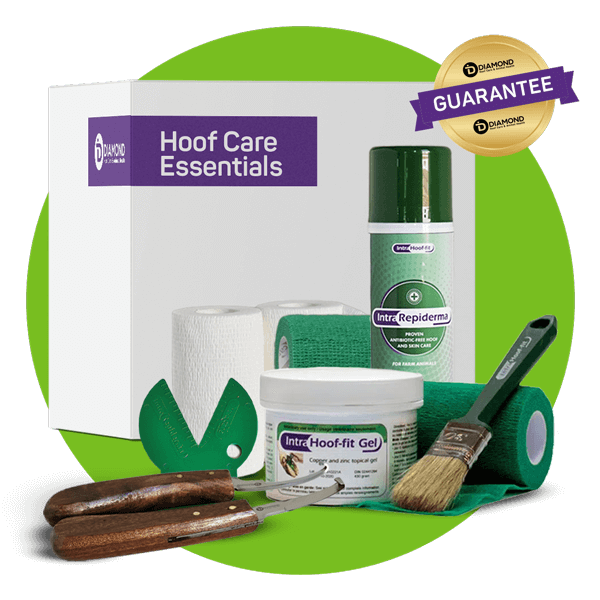
Hoof Care Starter Kit
Prevention Strategies for Hairy Heel Warts
Prevention is undoubtedly the best approach when it comes to digital dermatitis. By implementing proactive strategies, farmers can minimize the risk of this condition occurring in their cattle.
Digital dermatitis, commonly known as hairy heel warts, is a contagious and painful hoof disease that affects cattle. It is caused by a bacterial infection and can lead to severe lameness if left untreated. To prevent the occurrence of this condition, farmers should consider the following strategies:
Hoof Spraying Sessions
Hoof Sol Spray has gained popularity as a targeted approach and a more environmentally friendly method for hoof care prevention. Spraying the solution directly onto hooves promotes healthy skin and hooves. This method is particularly convenient for herds that aren’t suitable for traditional footbaths or situations where footbaths are considered impractical or inconsistent.
Footbaths
Farmers use Hoof Sol Bath solution to improve the health of their cows’ hooves. This product is registered with Health Canada under a VHP and can be used once or twice a week. It is also pH-independent. If you want to learn more about this prevention method, you can read my article ‘Overview of the Cattle Footbath Method on Dairy Farms‘, which explains it in detail.
Hygiene
As mentioned earlier, maintaining proper hygiene practices is key to preventing digital dermatitis. Regular cleaning of barns, dry-cow facilities, young stock pens, calf bedding, and equipment, along with proper manure management, helps create a clean and dry environment that is less conducive to bacterial growth.
Ensuring that the barns are well-ventilated and free from excessive moisture is crucial. Moisture provides an ideal breeding ground for bacteria, so it is important to keep the environment as dry as possible.

Quarantine and Isolation Protocols
Introducing new animals into an existing herd without proper precautions can introduce diseases, including digital dermatitis. Implementing quarantine and isolation protocols for newly acquired animals can help minimize the risk of disease transmission.
During the quarantine period, it is important to observe the health of the new animals closely. Any signs of digital dermatitis should be promptly addressed to prevent its spread.
It is crucial to remember that your dry cows and young stock also require attention. These animals are often away from the milking herd and not monitored as frequently. This group is susceptible to developing hairy heel warts, which can perpetuate the cycle of disease within the milking herd. It is crucial to break this vicious cycle of DD.
Vaccines for Digital Dermatitis
About 15 years ago, one of my clients tried a vaccine for hairy heel warts. However, the booster shots were very intense and didn’t produce satisfactory results. As a hoof trimmer, I recommended trimming and treating the cow instead—following sound prevention protocol.
However, a vaccine (Trep Shield HW- Novartis Animal Health) for digital dermatitis is available. It is advisable to consult with your professional team—including the veterinarian and hoof trimmer—and seek their advice before using it on your herd. Remember, a vaccination can only help control digital dermatitis at best.
By implementing these prevention strategies, farmers can significantly reduce the risk of digital dermatitis in their cattle. Regular monitoring, prompt treatment of any signs of the disease, and ongoing preventive measures are crucial for maintaining the health and well-being of the herd.

Hoof Care Starter Kit
FAQ about hairy heel warts
Is there a cure for warts on cattle?
The short answer is: Yes. In our trials in Canada and The Netherlands with Hoof-fit Gel, we scored 92% success after only 10 days. This non-antibiotic DIN product requires no withdrawals for meat or milk—an overall win-win.
How can I get rid of cattle warts fast?
Start with individual treatments and automate the future. A treatment protocol that guarantees quick success should include individual trimming and wrapping; within a week to 10 days, you will have gained control—I promise!
Final Thoughts
Digital dermatitis, or hairy heel warts, is a challenging condition that can significantly impact the well-being and productivity of cattle. By understanding the symptoms, causes, treatment options, and prevention strategies, you can effectively manage and control this disease. Implementing proper hygiene practices, ensuring adequate hoof care, and addressing herd health issues are fundamental steps in preventing digital dermatitis.
Remember, a healthy herd is a productive herd, and by actively managing and controlling digital dermatitis, you are not only safeguarding the well-being of your animals but also securing the success of your farming operation.

